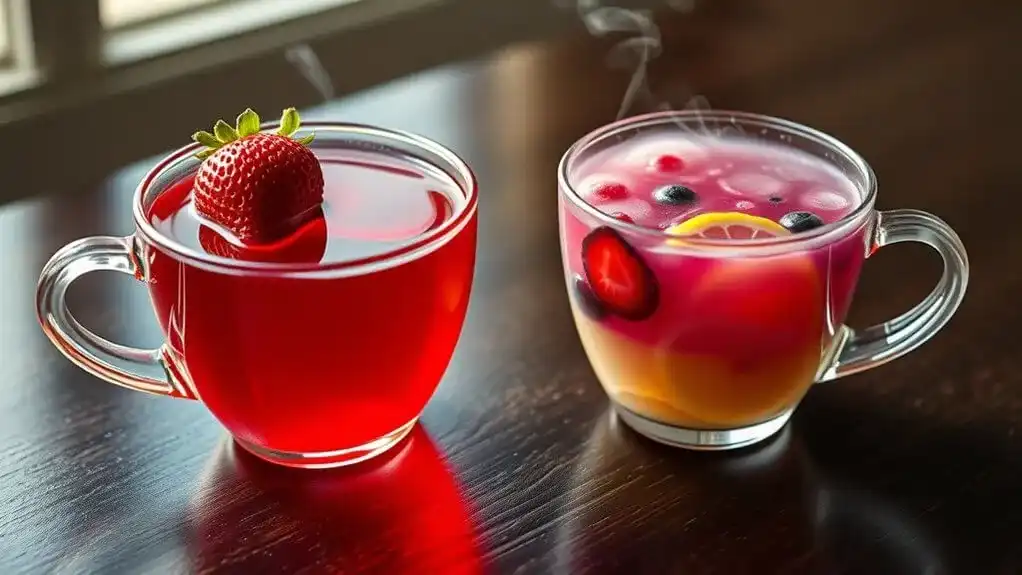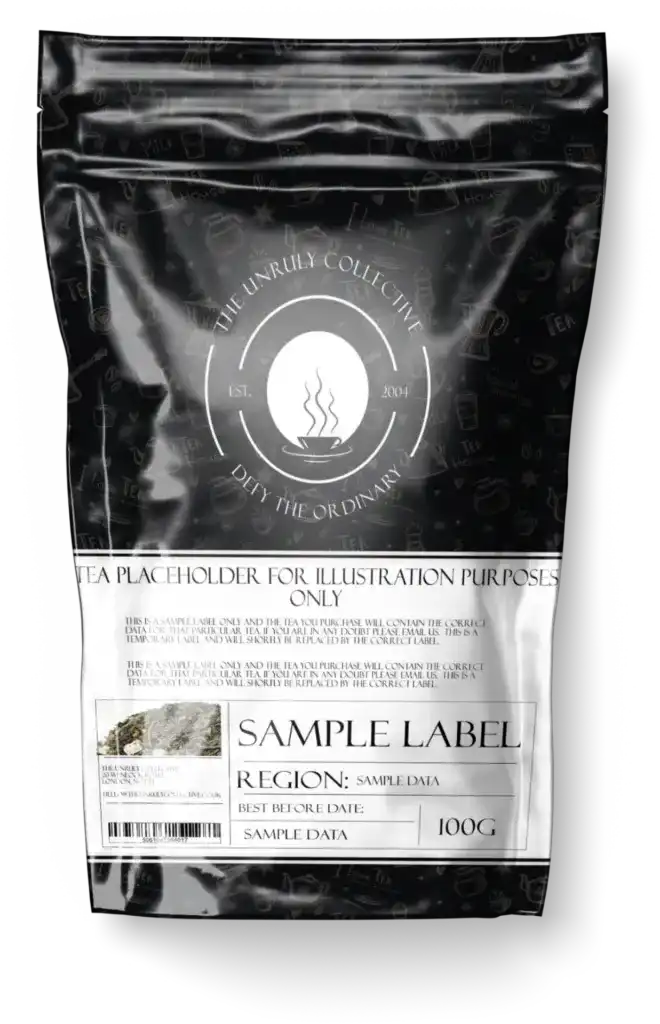Creating balanced fruit tea combinations comes down to understanding the core differences between single and blended approaches. Single fruit teas offer pure, distinct flavors and targeted health benefits, while blended varieties create complex taste profiles through careful pairing. The ideal ratio starts with a 3:1 base of primary to supporting ingredients, whether using one fruit or multiple. Proper steeping times and temperatures vary by fruit type, with most combinations requiring 4-8 minutes at 90-95°C. There's much more to discover about mastering these invigorating combinations.
Key Points
- Single fruit teas offer pure, distinct flavors while blended combinations create complex profiles that enhance both taste and health benefits.
- Start with a 3:1 base ratio when combining primary and supportive ingredients to maintain balanced flavor profiles.
- Common successful pairings include strawberry-raspberry for tartness and peach-mango for sweetness, offering versatile flavor combinations.
- Use 1/3 cup fresh fruit per serving as a starting point, adjusting proportions based on individual fruit intensity.
- Balance strong base ingredients like black tea or hibiscus with complementary fruits, considering steeping times and temperatures.
Understanding the Basics of Fruit Tea

When crafting the perfect fruit tea, understanding the fundamental components and preparation methods is essential. While fruit tea history spans centuries, modern blends typically start with black tea as the foundation, though green or herbal alternatives are gaining popularity. The art of flavor balancing involves combining tea with fruit juice concentrates, sweeteners, and spices. Most fruit teas follow a 3:1 base ratio when combining primary and supportive ingredients. Traditional recipes often require steeping overnight to achieve optimal flavor extraction.
The preparation process begins with steeping tea bags in boiling water for 5-10 minutes, followed by cooling and mixing with fruit concentrates. Adding granulated sugar helps achieve the desired sweetness, while cinnamon sticks provide warmth and depth. The mixture is then chilled and served over ice with fresh citrus slices and mint garnishes. Customization options are endless, from incorporating seasonal spices to experimenting with different juice-to-tea ratios or even adding spirits for an adult variation.
The Art of Single Fruit Tea Making

Although complex fruit tea blends offer diverse flavor profiles, mastering single fruit tea making provides the foundation for creating exceptional beverages. The key lies in proper fruit selection, emphasizing freshness importance for peak flavor and nutritional value. Understanding infusion techniques, like steeping fruits for 5-10 minutes in boiling water, guarantees consistent results. High-quality tea bases are essential for creating the perfect foundation for fruit infusions. Fresh lemons add tangy citrus notes that enhance the overall taste experience. Creating a unique blend requires gentle mixing motions to evenly distribute ingredients without damaging them.
Flavor balancing plays a vital role, as each fruit's natural sweetness can eliminate the need for added sugar. Tea makers can explore texture variations by using sliced fruits or creating purees for smoother consistency. Serving suggestions include both hot and cold options, with the flexibility to add garnishes like mint leaves or additional fruit slices. For those seeking customization, adding boba or optional sweeteners can transform a simple single fruit tea into a personalized beverage experience.
Popular Single Fruit Tea Varieties and Their Benefits

Single fruit teas offer distinct health advantages alongside their unique flavor profiles. As coffee alternatives, these beverages provide natural energy boosts while delivering specific nutritional benefits. Similar to how master tea blending requires significant expertise, selecting quality single fruit teas demands careful consideration of source and processing methods. The USDA Organic certification ensures the highest quality standards for many single fruit varieties. The variety of seasonal flavors makes it easy to enjoy different options throughout the year. Due to containing no tea leaves, all single fruit teas are naturally caffeine-free options for any time of day.
- Blueberry tea enhances memory function while delivering a potent dose of antioxidants
- Raspberry tea strengthens bones with its high manganese content
- Orange tea fights seasonal illnesses with immune-boosting vitamin C
- Pomegranate tea supports heart health through powerful antioxidants
- Grapefruit tea aids in weight management and digestive health
Each single fruit tea variety carries its own therapeutic properties. For instance, while blueberry tea targets cognitive function, grapefruit tea supports metabolism. This makes single fruit teas versatile options for those seeking targeted health benefits from their daily beverages.
Exploring Blended Fruit Tea Combinations
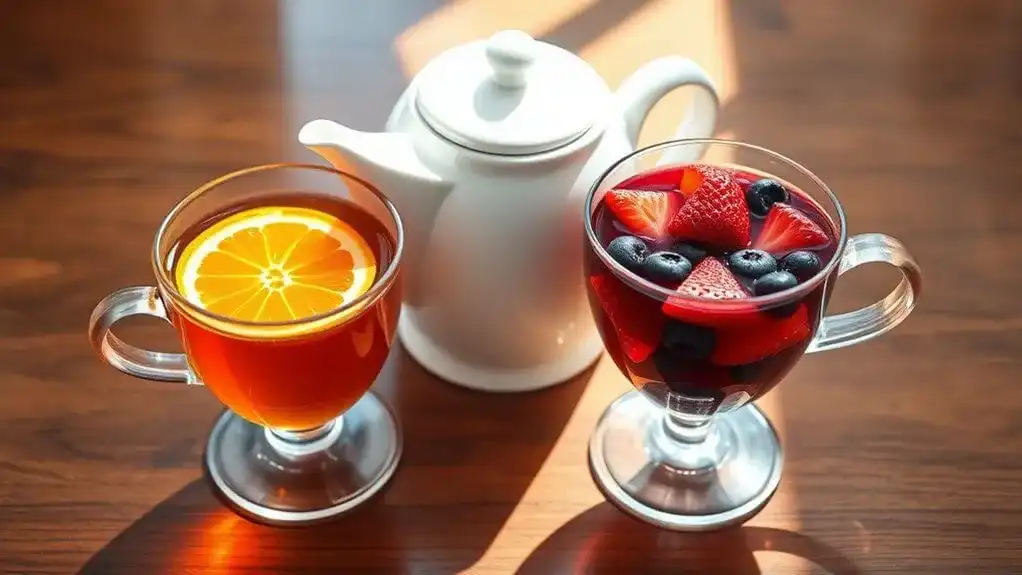
Blending different fruits in tea creates complex flavor profiles that surpass single-fruit varieties in both taste and health benefits. Expert tea blenders combine fruits like strawberry and raspberry for bright, tart notes, while peach and mango pairings deliver sweet, tropical undertones. These aromatic combinations often incorporate complementary base teas, such as white peony leaves for delicate blends or black tea for robust flavors. Red clover tea can be enhanced with natural lime sweetness for an added flavor dimension. Starting with 1/3 cup fresh fruit per serving ensures proper flavor extraction without overwhelming the tea base.
Temperature and steeping time play vital roles in maximizing these blends' potential. Brewing at 90°C brings out tartness in combinations like raspberry hibiscus, while lower temperatures around 85°C enhance the natural sweetness of tropical blends. The key to successful blending lies in balancing flavors, whether it's the spicy-sweet notes of ginger peach black tea or the earthy-fruity fusion of turmeric mango green tea.
Essential Tips for Creating Your Own Fruit Tea Blends

Creating your own fruit tea blends starts with understanding the essential components that make a balanced and flavorful combination. Successful flavor balancing relies on careful ingredient sourcing and knowing how different elements interact. Whether starting with dried fruits, herbs, or true teas as a base, the key is finding complementary flavors that enhance each other. The process of blending and flavoring requires expertise to achieve harmonious taste combinations. The inclusion of multiple tea types like black, oolong, and green tea creates a complex foundation for fruit additions. Using a digital food scale ensures precise measurements for consistent results.
- Choose a strong base ingredient like black tea or hibiscus for iced preparations
- Mix dried fruits with complementary spices, such as apple with cinnamon or pear with ginger
- Consider brewing temperatures and times specific to each ingredient
- Balance sweet fruits with tart elements like citrus peels or sumac
- Add floral notes from rose petals or lavender to create depth
Remember that proper brewing techniques are vital – different blends require specific temperatures and steeping times to achieve ideal flavor profiles.
Common Mistakes to Avoid When Mixing Fruit Teas
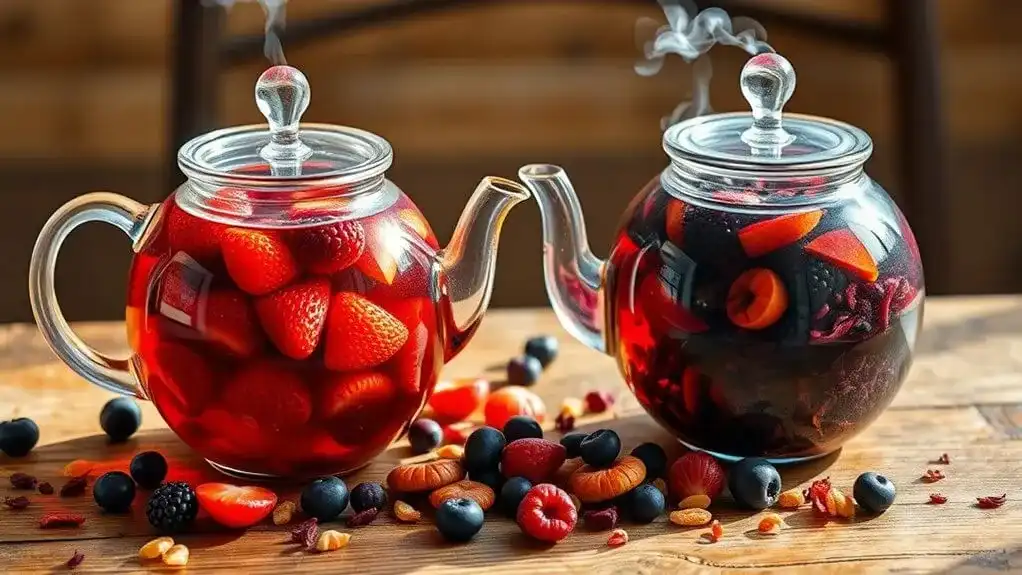
While mixing fruit teas can be a delightful culinary adventure, several common mistakes can hinder the perfect cup. Inconsistent steeping times often lead to bitter or muddled flavors, with different fruits requiring specific durations for ideal extraction. Temperature control plays an important role, as incorrect water temperatures can result in weak or unbalanced brews. Many tea enthusiasts make the mistake of using tap water with chlorine, which can significantly alter the natural fruit flavors. Starting with small batch sizes allows for better control and minimizes waste when experimenting with new combinations. Storing fruit tea blends in airtight containers is essential to preserve their distinct aromas and prevent flavor degradation.
Poor infusion methods, such as using inadequate tea balls or leaving leaves steeping too long, can greatly impact flavor quality. Successful flavor balancing requires careful attention to these technical aspects, along with a willingness to embrace blend experimentation. Tea enthusiasts should regularly conduct taste adjustments, trying various ratios and combinations while paying attention to individual fruit characteristics. This process of trial and error, coupled with proper brewing techniques, guarantees the creation of harmonious fruit tea blends.
Best Practices for Brewing and Serving Fruit Tea
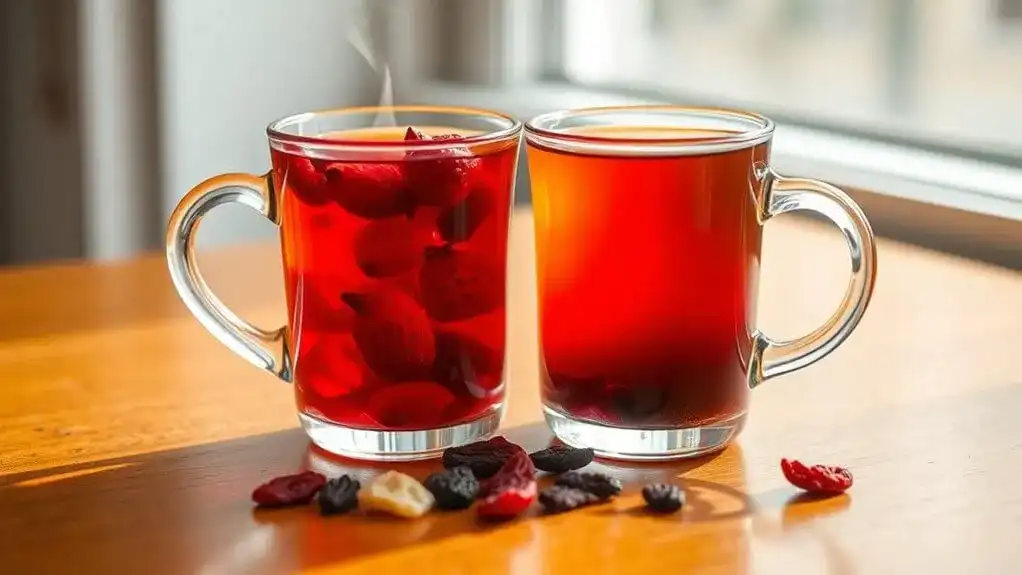
Building upon the lessons learned from common mistakes, mastering the best practices for brewing and serving fruit tea elevates the entire experience. The key to perfect brewing techniques lies in precise water temperatures and steeping times, with each fruit variety requiring specific conditions for ideal flavor extraction.
Here's what makes fruit tea preparation stand out:
- Use water at 90-95°C depending on the fruit blend
- Follow specific steeping times: 4-6 minutes for peach mango, 6-8 for citrus
- Combine fresh and dried fruits for a 12-minute steep
- Chill thoroughly before serving over ice
- Garnish with fresh fruit slices or mint leaves
These serving suggestions enhance both presentation and taste. Whether it's a single fruit or complex blend, paying attention to these details guarantees a consistently delightful tea experience.
Conclusion
Today's global tea market shows that fruit teas account for 25% of all tea consumed worldwide, with blended varieties gaining popularity faster than single-fruit options. Whether someone's brewing a simple apple tea or crafting complex multi-fruit blends, understanding the fundamentals of fruit tea creation helps guarantee a delightful experience. By following proper techniques and avoiding common pitfalls, anyone can master the art of balanced fruit tea combinations.
